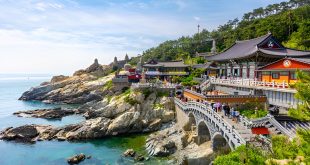1. What is the best time to visit the Matterhorn in Zermatt?
The Matterhorn can be enjoyed year-round. For skiing and snowboarding, winter (December to March) is ideal. If you prefer hiking and outdoor activities, visit during the summer months (June to September) when the weather is milder and trails are open.
2. How do I get to Zermatt and the Matterhorn?
Zermatt is a car-free village, so you’ll need to take a train from nearby towns like Täsch. From Zermatt, you can take the Gornergrat Railway or a cable car to reach various viewpoints and trails around the Matterhorn.
3. What are some must-do activities in Montreux by Lake Geneva?
In Montreux, take a leisurely walk along the lakeside promenade, visit the Château de Chillon, enjoy a boat cruise on Lake Geneva, and explore the Lavaux Vineyards. If you’re visiting in July, the Montreux Jazz Festival is a highlight.
4. How can I reach Jungfraujoch – Top of Europe?
To reach Jungfraujoch, take a train from Interlaken to Kleine Scheidegg, where you can transfer to the Jungfrau Railway that will take you to the highest railway station in Europe. The journey offers spectacular views, and the final ascent is an unforgettable experience.
5. Is Jungfraujoch suitable for families and children?
Yes, Jungfraujoch is family-friendly with plenty of activities for children, such as visiting the Ice Palace and playing in the snow at the Snow Fun Park. However, be mindful of the high altitude, and consult with a doctor if you’re traveling with very young children or have health concerns.
Read More Blogs here
6. What should I pack for a trip to these Swiss destinations?
For Zermatt and Jungfraujoch, pack warm clothing, even in summer, as temperatures can be chilly in the mountains. Sturdy walking shoes are essential for hiking. In Montreux, lighter clothing is suitable in summer, but bring layers as evenings can be cool by the lake.
7. Are these destinations accessible for travelers with mobility issues?
Switzerland is generally accessible, but the terrain at places like the Matterhorn and Jungfraujoch can be challenging. Many trains and cable cars are wheelchair accessible, but it’s advisable to check specific accessibility options ahead of time and plan accordingly.
8. Can I visit all three places in one trip?
Yes, you can visit the Matterhorn, Lake Geneva (Montreux), and Jungfraujoch in one trip, but it requires careful planning. Switzerland’s efficient train system makes it easier to travel between these locations. Allow at least a week to fully enjoy these top destinations without rushing.
9. Do I need to book tickets in advance for these attractions?
For Jungfraujoch and some activities in Zermatt, it’s recommended to book tickets in advance, especially during peak season. Montreux and Lake Geneva attractions like boat cruises may also benefit from advance booking during busy times.
10. What languages are spoken in these regions?
In Zermatt (Matterhorn) and Jungfraujoch, the primary language is German, though English is widely spoken. In Montreux, French is the main language, but you’ll also find English speakers in tourist areas.
11. What is the altitude of Jungfraujoch, and will I experience altitude sickness?
Jungfraujoch is located at an altitude of 3,454 meters (11,332 feet) above sea level. While most visitors do not experience severe altitude sickness, some may feel symptoms like shortness of breath, dizziness, or headaches due to the thin air. It’s advisable to ascend slowly, stay hydrated, and avoid strenuous activity if you start feeling unwell.
12. Are there guided tours available for these attractions?
Yes, guided tours are available for all three destinations. In Zermatt, you can find guided hiking and skiing tours around the Matterhorn. Montreux offers guided tours of Château de Chillon and the Lavaux Vineyards. For Jungfraujoch, you can book guided tours that include transportation and commentary, making your journey more informative and enjoyable.
13. What is the currency used in Switzerland, and are credit cards widely accepted?
Switzerland uses the Swiss Franc (CHF). Credit cards are widely accepted in most places, including hotels, restaurants, and tourist attractions. However, it’s a good idea to carry some cash, especially in smaller towns or when visiting more remote areas.
14. Can I combine my visit to the Matterhorn with other nearby attractions?
Yes, the Matterhorn is close to other attractions in the Valais region. Consider visiting the nearby Gorner Gorge, the Glacier Palace at the Klein Matterhorn, or taking a day trip to nearby villages like Täsch or Visp. The region offers a wealth of activities, from paragliding to thermal baths.
15. What kind of accommodation is available in Zermatt, Montreux, and Jungfraujoch?
Zermatt offers a range of accommodations from luxury hotels to budget-friendly hostels. Montreux has a variety of lakeside hotels, charming bed and breakfasts, and boutique accommodations. Jungfraujoch itself has no overnight accommodations, but nearby towns like Grindelwald and Interlaken offer plenty of options, from cozy chalets to upscale resorts.
Read More Blogs here


 Daily Blogger News Stay updated with the latest trends and insights. Your reliable source for daily updates and information.
Daily Blogger News Stay updated with the latest trends and insights. Your reliable source for daily updates and information.








